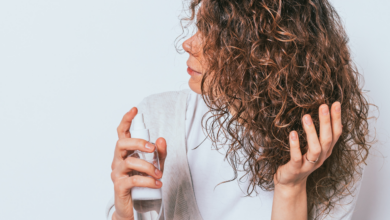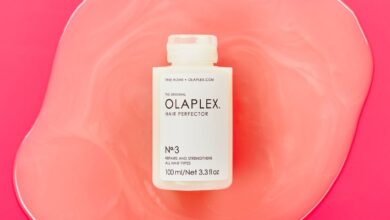
Have you ever wondered why some people have straight hair while others have curly or wavy locks? Well, the answer lies in the fascinating world of hair types and the science behind them. Our product, “The Science Behind Hair Types: Why Your Locks Behave the Way They Do,” delves into the intricate details of hair biology and genetics, unraveling the mysteries behind why your hair behaves the way it does. Whether you’re seeking to understand your own hair or simply curious about the science behind hair types, this article will enlighten you with its engaging insights and expert knowledge. So, get ready to embark on a journey through the fascinating world of hair, as we explore the factors that contribute to the unique behavior of your locks.
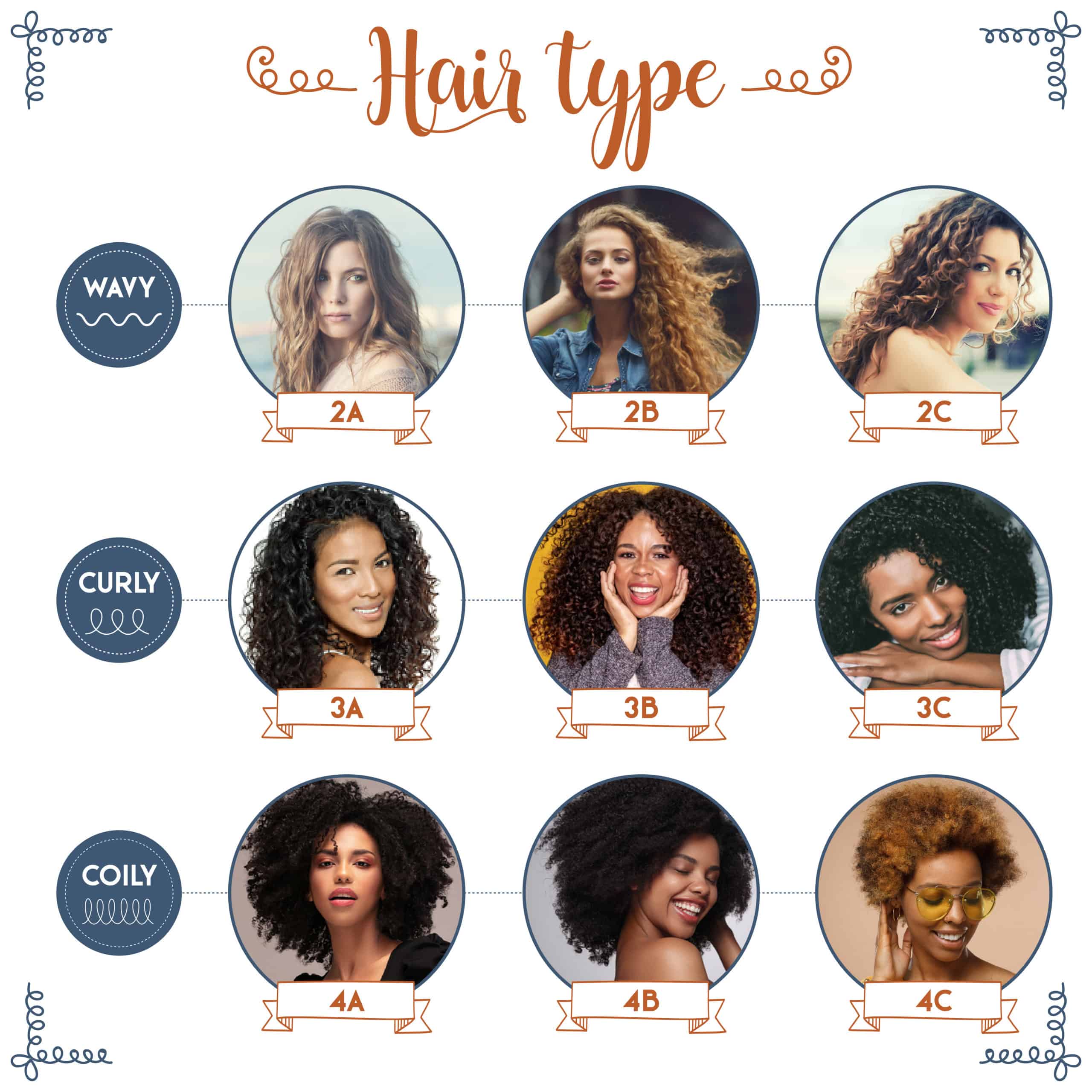
1. Understanding Hair Types
When it comes to understanding your hair, it’s important to know that not all hair is created equal. There are different hair types, each with their own unique characteristics and needs. By understanding your hair type, you can tailor your hair care routine to meet its specific requirements. Let’s delve into the fascinating world of hair types and explore the science behind them.
1.1 Different Hair Types
Hair can be categorized into four main types: straight, wavy, curly, and coily. Straight hair is characterized by its smooth, sleek appearance, with strands that are generally devoid of a discernible curl pattern. Wavy hair, on the other hand, falls somewhere between straight and curly, with loose, gentle waves that add texture and movement. Curly hair features defined curls or spirals, while coily hair has tightly coiled strands that form a distinct zigzag pattern.
1.2 The Structure of Hair
To understand how different hair types behave, it’s helpful to delve into the structure of a hair strand. Each individual hair is made up of three layers: the cuticle, cortex, and medulla. The cuticle is the outermost layer, consisting of overlapping cells that protect the inner layers from damage. The cortex, which makes up the majority of the hair strand, contains the pigment that gives hair its color, as well as the structural proteins that provide strength and elasticity. The medulla, present only in larger hair strands, is the innermost layer.
1.3 Genetics and Hair Types
Have you ever wondered why your hair type is the way it is? The answer lies in your genes. The genes you inherit from your parents play a significant role in determining your hair type. Specific genes control factors such as the shape of the hair follicle and the amount of sebum produced by the scalp. These genetic variations influence whether your hair will be straight, wavy, curly, or coily. While genetics predominantly determine your hair type, other factors such as hormones and environmental influences can also play a part.
2. Straight Hair

2.1 Characteristics of Straight Hair
Straight hair is known for its smooth, sleek appearance. It lacks a natural curl pattern, with each strand falling effortlessly in a straight line. Straight hair tends to be shinier and has a tendency to become oily more quickly compared to other hair types.
2.2 Genetic Factors Influencing Straight Hair
Genetic factors play a significant role in determining straight hair. Individuals with straight hair typically have hair follicles that are round in shape, allowing the hair to grow straight from the scalp. Additionally, straight hair is often associated with lower levels of the protein responsible for curling the hair strand.
2.3 Hair Care Tips for Straight Hair
Caring for straight hair involves maintaining its shine and managing oiliness. Here are some tips to keep your straight locks looking their best:
- Use a lightweight, clarifying shampoo to prevent product buildup and keep your hair feeling clean.
- Avoid heavy conditioners and instead opt for lightweight formulas that won’t weigh down your hair.
- Use a wide-toothed comb or a brush with soft bristles to prevent breakage and minimize static.
- Apply heat protectant before using heat styling tools, such as straighteners or curling irons, to minimize damage.
- Consider using dry shampoo between washes to absorb excess oil and prolong the time between washings.
3. Wavy Hair
3.1 Characteristics of Wavy Hair
Wavy hair is characterized by loose, gentle waves that add texture and movement to the hair. It falls between straight and curly hair on the spectrum. Wavy hair can range from slight bends to more pronounced waves, with its texture often varying throughout the length of the hair.
3.2 Genetic Factors Influencing Wavy Hair
Genetics play a significant role in the development of wavy hair. The shape of the hair follicle, as determined by specific genes, plays a role in creating the unique wave patterns found in wavy hair. Additionally, variations in the protein composition of the hair shaft also contribute to the waviness of the hair.
3.3 Hair Care Tips for Wavy Hair
Maintaining the natural wave pattern and managing frizz are key considerations when caring for wavy hair. Here are some tips to help you embrace your waves:
- Use a sulfate-free shampoo and conditioner to prevent stripping natural oils from your hair, which can lead to frizz.
- Apply a leave-in conditioner or a curl-enhancing cream to define and enhance your waves.
- Avoid brushing your hair when it’s dry, as this can disrupt the natural wave pattern and cause frizz.
- Consider using a wide-toothed comb or your fingers to detangle your hair when it’s wet.
- Limit heat styling and embrace air-drying whenever possible to minimize damage and frizz.

4. Curly Hair
4.1 Characteristics of Curly Hair
Curly hair is characterized by defined curls or spirals. It has a unique texture that ranges from loose, bouncy curls to tighter, spring-like coils. Curly hair tends to be more prone to frizz and can be more dry and brittle compared to other hair types.
4.2 Genetic Factors Influencing Curly Hair
Genetics is a major determinant of curly hair. The shape of the hair follicle and variations in the proteins responsible for curling the hair strand are influenced by specific genes. Additionally, the level of moisture and oil production in the scalp can impact the appearance and health of curly hair.
4.3 Hair Care Tips for Curly Hair
Caring for curly hair involves maintaining moisture and minimizing frizz. Here are some tips to help you embrace your curls:
- Use a moisturizing shampoo and conditioner specifically formulated for curly hair to nourish and hydrate your locks.
- Apply a leave-in conditioner or a curl-defining cream to enhance and define your curls.
- Consider using a microfiber towel or a cotton T-shirt to gently blot your hair after washing, as rubbing with a regular towel can cause frizz.
- Minimize heat styling and embrace air-drying to avoid further drying out your hair.
- Use a wide-toothed comb or your fingers to detangle your hair when it’s wet to prevent breakage.
![]()

5. Coily Hair
5.1 Characteristics of Coily Hair
Coily hair, also known as afro-textured or kinky hair, is characterized by tightly coiled strands that form a distinctive zigzag pattern. It is the most fragile and prone to dryness among the different hair types. Coily hair can range from small, spring-like coils to larger, more defined zigzag patterns.
5.2 Genetic Factors Influencing Coily Hair
Genetics strongly influence the development of coily hair. The shape of the hair follicle and specific genetic variations determine the unique curl pattern and texture of coily hair. Additionally, coily hair tends to have fewer cuticle layers, which can contribute to its fragility and susceptibility to breakage.
5.3 Hair Care Tips for Coily Hair
Nourishing and moisturizing are key components of caring for coily hair. Here are some tips to help you maintain the health and beauty of your coils:
- Use a moisturizing shampoo and conditioner designed for coily hair to prevent dryness and breakage.
- Apply a leave-in conditioner or a rich hair oil to provide intense hydration and seal in moisture.
- Avoid brushing or combing coily hair when it’s dry, as this can cause breakage and disrupt the natural curl pattern.
- Embrace protective styles, such as braids or twists, to minimize manipulation and reduce the risk of damage.
- Deep condition your hair regularly to provide extra nourishment and strengthen the strands.
6. Environmental Factors and Hair Types
6.1 Humidity and Hair
One environmental factor that can greatly impact the behavior of your hair is humidity. High humidity levels can cause straight hair to become frizzy or lose its sleekness. Wavy and curly hair, on the other hand, may experience increased volume and enhanced curl definition in humid conditions. Coily hair can suffer from excessive dryness in low humidity environments.
6.2 Sun Exposure and Hair
Sun exposure can also have an effect on your hair. Ultraviolet (UV) radiation can damage the hair cuticle, leading to dryness, brittleness, and color fading. Straight hair, due to its smoother cuticle structure, may be more resilient to sun damage compared to wavy, curly, or coily hair. However, it is important to protect all hair types from the sun’s harmful rays by using UV-protective hair products or wearing a hat.
6.3 Pollution and Hair
The presence of pollution in the environment can also impact the health and appearance of your hair. Airborne pollutants, such as dust, smoke, and chemicals, can accumulate on the hair strands, resulting in a dull and lackluster appearance. All hair types can be affected by pollution, and it is important to regularly cleanse your hair to remove any buildup and maintain its vitality.
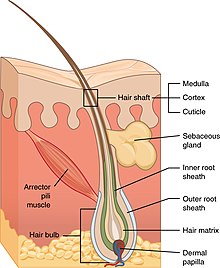
7. The Role of Hair Products
7.1 Understanding Different Hair Products
There is a wide array of hair products available in the market, each designed to address specific hair concerns and cater to different hair types. Understanding the different types of hair products can help you make informed choices and select the ones best suited for your hair.
Shampoos are cleansing products that remove dirt, oil, and product buildup from the hair and scalp. Conditioners, on the other hand, provide moisture, detangle the hair, and improve its manageability. Styling products, such as gels, mousses, and hair sprays, are used to create and maintain specific hairstyles. Hair treatments, including masks and serums, offer targeted nourishment and repair for various hair concerns.
7.2 Choosing the Right Products for Your Hair Type
When choosing hair products, it’s important to consider your hair type and its specific needs. For example, individuals with straight hair may benefit from volumizing shampoos and lightweight conditioners to avoid weighing down the hair. Those with curly or coily hair may require heavier, moisturizing products to combat dryness and enhance curl definition. Reading product labels and selecting formulas tailored to your hair type can make a significant difference in the health and appearance of your hair.
7.3 How Science Impacts Hair Products
Scientific advancements play a crucial role in the development of hair products. Research and innovation have led to the formulation of specialized ingredients that target specific hair concerns and provide optimal results. For instance, proteins and amino acids can help strengthen the hair, while oils and humectants provide moisture and hydration. Additionally, advancements in technology have allowed for the creation of heat protectants and UV filters to shield the hair from damage.
8. Hair Treatments and Styling Techniques
8.1 Chemical Treatments and Their Effects on Different Hair Types
Chemical treatments, such as relaxers, perms, and hair dyes, can significantly alter the structure and appearance of the hair. It is important to understand the potential effects of these treatments on different hair types.
Straight hair can be more resilient when it comes to chemical treatments, but it is still important to follow proper procedures and use reputable products to minimize damage. Wavy and curly hair may need extra care and conditioning to maintain moisture and prevent dryness after chemically altering the hair. Coily hair should be treated with caution, as it is more fragile and prone to breakage. It is advisable to seek professional guidance and choose gentle, hair-friendly products for chemical treatments.
8.2 Heat Styling and Its Impact on Hair
Heat styling tools, such as flat irons, curling irons, and blow dryers, can transform your hair into various styles. However, excessive heat can damage the hair and lead to dryness, frizz, and breakage. Understanding how to use heat styling tools properly and incorporating protective measures is essential for minimizing damage.
Using a heat protectant spray before styling can create a barrier between the heat and your hair, reducing the risk of heat-induced damage. Limiting the frequency of heat styling and opting for lower heat settings can also help preserve the health and integrity of your hair. Regular deep conditioning treatments and incorporating heat-free styling techniques, such as air-drying or setting your hair in rollers, can further minimize the impact of heat on your strands.
8.3 Protective Hairstyles for Different Hair Types
Protective hairstyles offer a great way to give your hair a break from daily manipulation and exposure to damaging elements. Different hair types can benefit from various protective styles.
For straight hair, gentle braids or updos can help minimize friction and reduce exposure to environmental factors. Wavy hair can be protected with loose braids or twists that preserve the natural wave pattern. Curly hair can benefit from more intricate protective styles, such as box braids or twists, that help retain moisture and minimize tangling. Coily hair can be styled in a wide range of protective hairstyles, including braids, twists, and updos, that provide maximum protection and minimize manipulation.
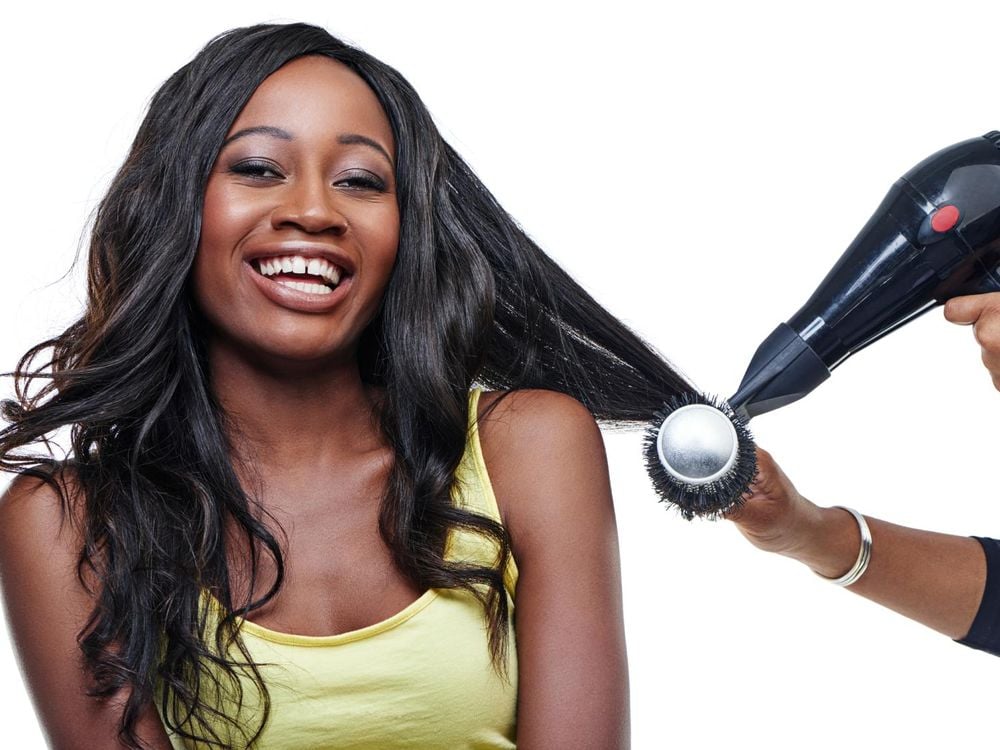
9. Hair Texture and Scalp Health
9.1 Connection Between Hair Texture and Scalp Health
The health of your scalp plays a crucial role in the overall health and appearance of your hair. Various scalp conditions can impact hair texture, making it essential to maintain a healthy scalp for optimal hair growth.
Individuals with an oily scalp may notice that their hair appears greasy and lacks volume. Daily washing with a gentle shampoo formulated for oily scalps can help manage excess oil production. Dry scalp, on the other hand, can lead to flakiness and itchiness. Regularly moisturizing the scalp and using sulfate-free, hydrating shampoos can help alleviate dryness. Additionally, conditions such as dandruff or scalp psoriasis can affect hair texture and require specialized treatments to address both the scalp and hair issues.
9.2 Common Scalp Issues and Their Impact on Hair Types
Scalp issues can affect all hair types, but their impact can vary depending on the individual. For example, individuals with straight hair may find that an oily scalp contributes to their hair appearing limp and greasy. Wavy and curly hair, on the other hand, may experience additional challenges when it comes to scalp care, as the natural oils produced by the scalp may not easily travel down the hair shaft due to the twists and bends in the strands. Coily hair may be more prone to dry scalp conditions, which can lead to itchiness and flakiness.
9.3 Maintaining a Healthy Scalp for Optimal Hair
Maintaining a healthy scalp is crucial for promoting optimal hair growth and maintaining the health and appearance of your locks. Here are some tips to help you care for your scalp:
- Cleanse your scalp regularly with a gentle shampoo to remove dirt, oil, and product buildup.
- Avoid using hot water when washing your hair, as it can strip the scalp of its natural oils.
- Massage your scalp regularly to stimulate blood circulation and promote hair growth.
- Use scalp treatments or masks targeted for your specific scalp condition to nourish and balance the scalp.
- Protect your scalp from sun exposure by wearing a hat or using hair products with built-in UV protection.
10. Future Trends and Scientific Advancements
10.1 Research and Development in Hair Science
The field of hair science is continually evolving with ongoing research and development. Scientists are dedicated to exploring the intricacies of hair types, the physiology of the scalp, and the impact of various factors on hair health. Advancements in this field have the potential to revolutionize the way we understand and care for our hair.
Scientists are investigating the genetic factors that influence hair types, shedding light on the underlying mechanisms that create the diversity of hair textures. Additionally, research is being conducted to identify innovative ingredients and formulas that can address specific hair concerns, such as hair loss, scalp disorders, and damage prevention.
10.2 The Potential for Customized Hair Care Solutions
As our understanding of hair types and their unique needs grows, the potential for customized hair care solutions becomes more apparent. Personalized hair care entails tailoring products and treatments to suit an individual’s specific hair type, lifestyle, and concerns.
With advancements in technology and the availability of data-driven approaches, it is possible to create personalized formulas that address an individual’s hair texture, scalp health, environmental factors, and lifestyle choices. Customized hair care solutions have the potential to optimize hair health and transform the way we care for our locks.
10.3 The Influence of Technology on Hair Products
Technological advancements have already made a significant impact on the hair care industry, and this influence is expected to continue to shape the future of hair products. From innovative formulations to high-tech devices, technology has the potential to revolutionize how we care for our hair.
Advancements in product development have allowed for the creation of specialized hair treatments that repair and nourish the hair at a molecular level. For example, nanotechnology has enabled the development of hair masks and serums with tiny particles that can penetrate the hair shaft, delivering targeted ingredients for maximum efficacy.
In conclusion, understanding the science behind hair types is essential for maintaining healthy, vibrant locks. By recognizing the unique characteristics and needs of your hair type, you can tailor your hair care routine to ensure optimal results. With ongoing research and advancements in the field of hair science, the future holds exciting possibilities for personalized hair care solutions and innovative products. Embrace your hair type, nurture your strands, and enjoy the journey of discovering what works best for your locks.
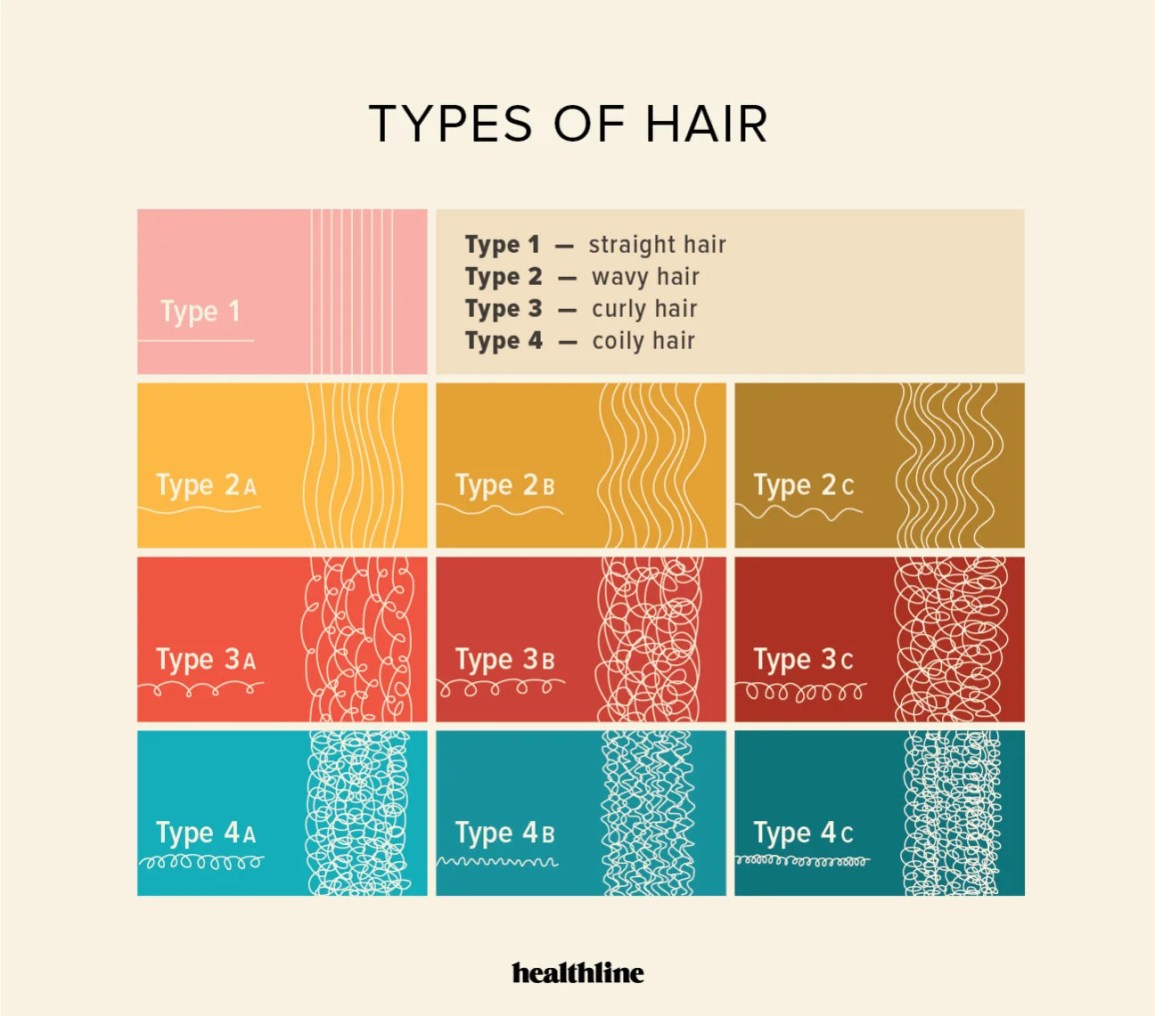
THE ORDINARY AHA 30% + BHA 2% Peeling Solution Review(Opens in a new browser tab)
From Dryness To Shine: Balancing Moisture Across Different Hair Types(Opens in a new browser tab)

